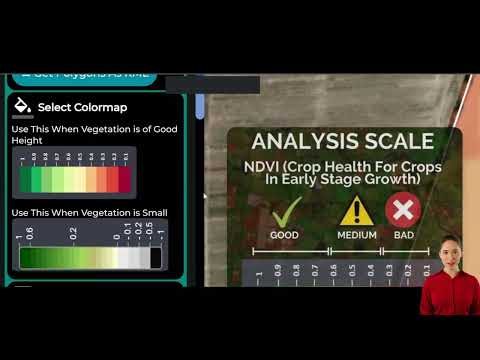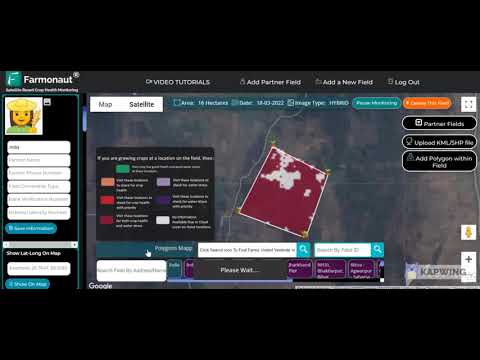Nebraska Farmers Navigate Trade Uncertainty and Drought: Soil Health Tech Offers Hope
“Nebraska’s agricultural research faces funding cuts, while 60% of the state experiences drought conditions in 2023.”
In the heartland of America, Nebraska’s farmers are facing a perfect storm of challenges that are testing their resilience and ingenuity. As we delve into the complex landscape of agricultural trade policies, soil health technology, and the looming specter of drought, we find a community at a crossroads, seeking innovative solutions to age-old problems. Join us as we explore how Nebraska’s agricultural sector is navigating these turbulent waters and how emerging technologies, including satellite-based crop monitoring, are offering a beacon of hope.
The Trade Tango: Uncertainty in Agricultural Markets
The past few years have seen significant upheaval in agricultural trade policies, creating a ripple effect that has reached the fields of Nebraska. Farmers in the Cornhusker State have found themselves in the midst of a global economic chess game, where each move on the international stage has direct implications for their livelihoods.
Recent tariffs and trade disputes have introduced an unprecedented level of uncertainty in farm markets. While many Nebraska farmers have historically supported robust border policies, the current situation has left many questioning the long-term impacts on their operations. The agricultural trade policies have created a complex web of challenges and opportunities that farmers must navigate carefully.
- Fluctuating commodity prices due to trade tensions
- Shifts in global demand for Nebraska’s agricultural products
- Increased competition from alternative markets
As we analyze these trends, it’s clear that the need for adaptability and market intelligence has never been greater. Farmers are increasingly turning to technological solutions to gain a competitive edge in this uncertain landscape.

Soil Health Technology: A Ray of Hope
Amidst the market turbulence, there’s a growing focus on soil health technology that promises to revolutionize farming practices in Nebraska. The University of Nebraska has been at the forefront of this research, developing innovative techniques to enhance soil quality and crop yields.
These advancements in soil health technology are not just academic exercises; they represent a tangible path forward for farmers looking to optimize their operations in the face of economic and environmental challenges. By improving soil structure and nutrient content, these technologies aim to increase resilience against both market fluctuations and climate variability.
Key areas of soil health research include:
- Microbiome engineering for enhanced nutrient uptake
- Precision agriculture techniques for targeted soil management
- Cover crop strategies to improve soil structure and reduce erosion
- Advanced soil testing methods for real-time nutrient analysis
The adoption of these soil improvement techniques is gaining momentum across Nebraska, with farmers reporting promising results in early trials. However, the path to widespread implementation is not without its hurdles.
The Funding Conundrum: Balancing Innovation and Budget Constraints
While the potential of soil health technology is clear, the reality of agricultural research funding presents a significant challenge. Recent budget cuts have cast a shadow over some promising research programs at the University of Nebraska, highlighting the precarious balance between innovation and fiscal responsibility.
These funding challenges are not unique to Nebraska but reflect a broader trend in agricultural research across the United States. The impact of these cuts could be far-reaching, potentially slowing the development and adoption of crucial technologies that farmers need to remain competitive in a global market.
In this context, the role of private sector innovation becomes increasingly important. Companies like Farmonaut are stepping in to fill the gap, offering affordable, satellite-based solutions that complement and extend the reach of traditional agricultural research.
“Satellite-based crop monitoring can help Nebraska farmers adapt to changing conditions across 45 million acres of farmland.”
Drought: The Persistent Threat to Nebraska’s Agriculture
As if market uncertainties and funding challenges weren’t enough, Nebraska farmers are also grappling with the ongoing threat of drought. The drought impact on agriculture has been severe, with limited snowfall exacerbating already dry conditions across much of the state.
The weather outlook for farmers remains a critical factor in their decision-making process. Kyle Kleckner, a local meteorologist, provides regular updates that have become essential reading for the agricultural community. These forecasts not only inform short-term planting and harvesting decisions but also play a crucial role in long-term water management strategies.
The drought’s effects are multifaceted:
- Reduced crop yields and quality
- Increased irrigation costs
- Stress on livestock and pasture lands
- Heightened risk of wildfires
In response to these challenges, many Nebraska farmers are turning to innovative water conservation techniques and drought-resistant crop varieties. The integration of soil health technology with advanced irrigation systems is showing promise in mitigating some of the drought’s worst effects.

The Role of Satellite Technology in Modern Farming
In the face of these multifaceted challenges, satellite-based crop monitoring has emerged as a powerful tool for Nebraska farmers. This technology, offered by companies like Farmonaut, provides real-time insights into crop health, soil moisture levels, and other critical metrics that can inform decision-making on the farm.
The benefits of satellite-based monitoring are numerous:
- Early detection of crop stress and disease
- Optimization of irrigation and fertilizer use
- Improved yield forecasting
- Enhanced ability to adapt to changing weather conditions
By leveraging this technology, farmers can make more informed decisions about resource allocation, potentially mitigating some of the risks associated with drought and market volatility.
For those interested in exploring these cutting-edge solutions, Farmonaut offers a range of tools accessible through their  , as well as mobile applications for both
, as well as mobile applications for both  and
and  platforms.
platforms.
Navigating the Future: Strategies for Nebraska Farmers
As we look to the future, it’s clear that Nebraska farmers will need to employ a multifaceted approach to address the challenges they face. Here are some key strategies that are emerging:
- Diversification: Exploring alternative crops and revenue streams to reduce reliance on traditional commodities affected by trade uncertainties.
- Technology Adoption: Embracing soil health technology and satellite-based monitoring to optimize farm operations and resource use.
- Water Management: Implementing advanced irrigation techniques and drought-resistant practices to combat the ongoing threat of water scarcity.
- Market Intelligence: Utilizing data analytics and market forecasting tools to make informed decisions about planting and selling.
- Collaborative Research: Partnering with universities and private sector companies to drive innovation in agricultural practices.
By combining these strategies with the resilience and ingenuity that Nebraska farmers are known for, there’s hope for a robust and sustainable agricultural future in the state.
The Path Forward: Balancing Tradition and Innovation
As we navigate these complex issues, it’s clear that the future of Nebraska agriculture lies in striking a balance between time-honored farming traditions and cutting-edge technological innovations. The challenges of trade tariffs and farming, coupled with environmental pressures, demand a new approach that leverages the best of both worlds.
Farmers who embrace this dual approach are finding success in unexpected places. By combining traditional knowledge of their land with data-driven insights from satellite monitoring and soil health assessments, they’re able to make more informed decisions that boost productivity while conserving resources.
For those looking to dive deeper into these technologies, Farmonaut offers comprehensive resources, including API access for developers at https://sat.farmonaut.com/api and detailed documentation at Farmonaut API Developer Docs.
Community Resilience and Knowledge Sharing
One of the most powerful tools in the Nebraska farmer’s arsenal is the strong sense of community and willingness to share knowledge. As farmers experiment with new technologies and techniques, they’re increasingly coming together to share their experiences and learnings.
This collaborative approach is proving invaluable in addressing the Nebraska farming challenges faced by the community. Whether it’s through local farming cooperatives, online forums, or agricultural extension programs, the exchange of ideas is helping to accelerate the adoption of best practices across the state.
We encourage all farmers to engage with these communities and share their own experiences with soil health technology, drought management strategies, and market navigation techniques. By working together, Nebraska’s agricultural community can build a more resilient and prosperous future.
Comparative Analysis: Nebraska’s Agricultural Landscape
| Factors | Past Year | Current Year | Future Outlook |
|---|---|---|---|
| Trade Policies | Uncertain | Volatile | Cautiously optimistic |
| Soil Health Technology Adoption | 15% | 25% | Projected 40% |
| Drought Conditions | Moderate | Severe | Uncertain |
| Agricultural Research Funding | Stable | Decreased by 10% | Potential increases |
| Satellite-based Crop Monitoring Usage | 10% | 20% | Projected 35% |
Looking Ahead: The Future of Nebraska Agriculture
As we conclude our exploration of the challenges and opportunities facing Nebraska’s agricultural sector, it’s clear that the path forward will require adaptability, innovation, and resilience. The interplay of agricultural trade policies, soil health technology, and environmental factors will continue to shape the landscape for years to come.
We believe that by embracing technological advancements, fostering community collaboration, and maintaining their trademark resilience, Nebraska farmers are well-positioned to overcome the current challenges and thrive in the evolving agricultural landscape.
For those looking to stay at the forefront of these developments, we encourage you to explore the tools and resources available through platforms like Farmonaut. Their satellite-based crop monitoring solutions offer a powerful means of adapting to changing conditions and optimizing farm operations.
Earn With Farmonaut: Affiliate Program
Join Farmonaut’s affiliate program and earn a 20% recurring commission by helping farmers save 10% with your promo code. Onboard 10 Elite farmers monthly to earn a minimum of $148,000 annually—start now and grow your income!
Farmonaut Subscriptions
Frequently Asked Questions
Q: How are trade uncertainties affecting Nebraska farmers?
A: Trade uncertainties are creating volatility in commodity prices, shifting global demand for Nebraska’s agricultural products, and increasing competition from alternative markets. This is leading to challenges in long-term planning and financial stability for many farmers.
Q: What is soil health technology, and how can it benefit farmers?
A: Soil health technology encompasses a range of innovations aimed at improving soil quality and crop yields. This includes microbiome engineering, precision agriculture techniques, and advanced soil testing methods. These technologies can help farmers optimize their operations, increase resilience to environmental stresses, and potentially mitigate some effects of market volatility.
Q: How severe is the current drought in Nebraska?
A: As of 2023, approximately 60% of Nebraska is experiencing drought conditions, ranging from moderate to severe. This is having significant impacts on crop yields, irrigation costs, and overall agricultural productivity.
Q: What role does satellite-based crop monitoring play in modern farming?
A: Satellite-based crop monitoring provides real-time insights into crop health, soil moisture levels, and other critical metrics. This technology allows farmers to make more informed decisions about resource allocation, detect crop stress early, optimize irrigation and fertilizer use, and improve yield forecasting.
Q: How can farmers stay informed about the latest agricultural research and market trends?
A: Farmers can stay informed by engaging with local agricultural extension programs, participating in farming cooperatives, following industry publications, and utilizing digital platforms that provide market insights and weather forecasts. Additionally, tools like Farmonaut’s satellite monitoring services can provide valuable, up-to-date information on crop conditions and market trends.
As we continue to monitor the evolving situation in Nebraska’s agricultural sector, we invite you to stay connected with us for the latest updates and insights. Together, we can work towards a sustainable and prosperous future for farming in the Cornhusker State.




